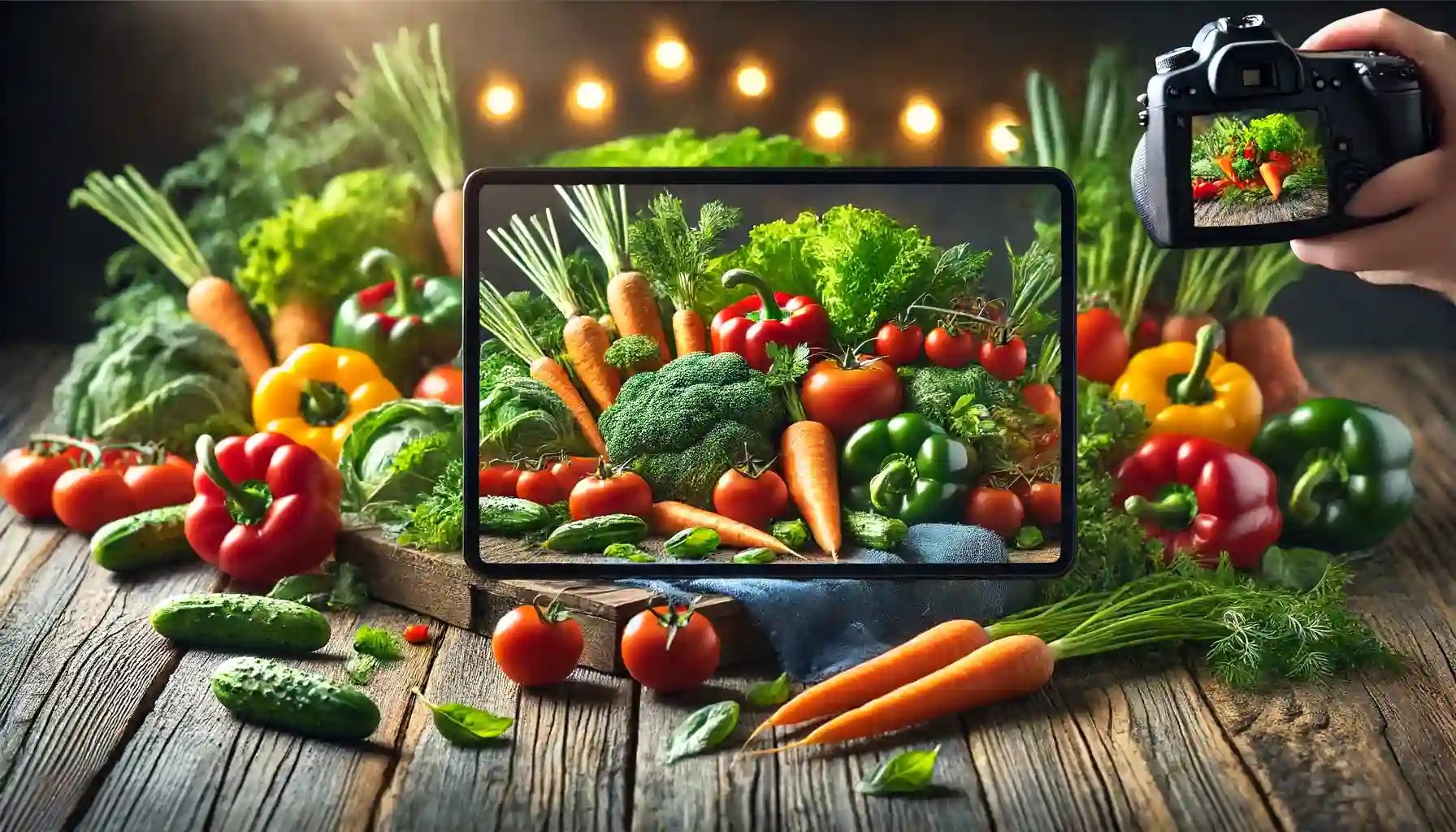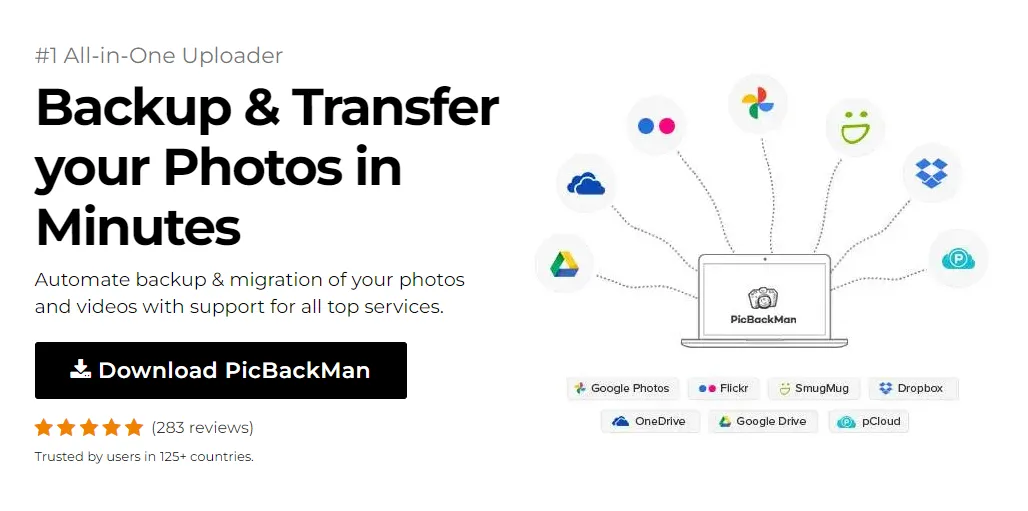
Why is it the #1 bulk uploader?
- Insanely fast!
- Maintains folder structure.
- 100% automated upload.
- Supports RAW files.
- Privacy default.
How can you get started?
Download PicBackMan and start free, then upgrade to annual or lifetime plan as per your needs. Join 100,000+ users who trust PicBackMan for keeping their precious memories safe in multiple online accounts.
“Your pictures are scattered. PicBackMan helps you bring order to your digital memories.”
How to photograph vegetables?


Vegetable photography is an art form that combines elements of still life, food photography, and nature photography. Capturing the vibrant colors, intricate textures, and unique shapes of vegetables can be both challenging and rewarding. Whether you are a professional photographer, a food blogger, or simply someone who enjoys photographing their garden's bounty, this guide will provide you with the tools and techniques you need to master the art of vegetable photography.
Understanding the Basics of Vegetable Photography
Vegetable photography requires an understanding of several fundamental principles. These include lighting, composition, and the importance of showcasing the natural beauty of vegetables.
Lighting: Natural light is often the best choice for vegetable photography. It brings out the true colors and textures without introducing unwanted shadows or highlights. Soft, diffused light from a window or a lightbox can create a pleasing effect.
Composition: The rule of thirds, leading lines, and framing are essential compositional techniques in vegetable photography. Arranging vegetables in an appealing manner and using props can add depth and interest to your photos.
Showcasing Natural Beauty: Vegetables have their own unique beauty. Highlighting their freshness, color, and texture can make your photos more engaging. Avoid over-styling and let the vegetables speak for themselves.
Choosing the Right Equipment
While you don't need expensive equipment to photograph vegetables, having the right tools can enhance the quality of your images. Here are some recommendations:
Camera: A DSLR or mirrorless camera with a macro lens is ideal for capturing detailed shots of vegetables. However, modern smartphones with high-quality cameras can also produce excellent results.
Tripod: A sturdy tripod is essential for keeping your camera steady, especially in low light conditions. It allows you to take sharp, clear photos without camera shake.
Lighting Equipment: If natural light is not available, consider using softbox lights or LED panels to create a similar effect. Reflectors can help bounce light and reduce shadows.
Backgrounds and Props: Simple, neutral backgrounds work best for vegetable photography. Wooden boards, linen cloths, and cutting boards can add a rustic touch. Props like knives, baskets, and bowls can complement the vegetables and add context to your photos.
How to Photograph Vegetables: Step-by-Step Guide
Preparing Your Vegetables
Before you start photographing, it's important to prepare your vegetables properly.
Clean and Trim: Wash your vegetables thoroughly to remove any dirt or blemishes. Trim any unwanted parts to create a clean and polished look.
Freshness: Fresh vegetables are more vibrant and photogenic. Choose vegetables that are in peak condition for the best results.
Arrangement: Think about how you want to arrange your vegetables. You can create a symmetrical arrangement, a random pile, or a more elaborate composition using props and backgrounds.
Setting Up Your Scene
Setting up your scene involves arranging your vegetables, choosing the right background, and positioning your lighting.
Background: Choose a background that complements the colors and textures of your vegetables. Neutral colors work best, but you can also experiment with contrasting backgrounds for a more dramatic effect.
Lighting: Position your light source to one side of your scene to create depth and dimension. Use reflectors to bounce light and fill in shadows if needed.
Composition: Arrange your vegetables in a way that is visually pleasing. Use the rule of thirds to place the main subject off-center, and incorporate leading lines to draw the viewer's eye through the photo.
Capturing the Shot
Once your scene is set up, it's time to start capturing your shots.
Focus: Use a shallow depth of field to blur the background and make the vegetables stand out. Focus on the most interesting part of the vegetable, such as the texture or color.
Exposure: Check your exposure settings to ensure your photo is not too dark or too bright. Adjust your aperture, shutter speed, and ISO as needed.
Angles: Experiment with different angles and perspectives to find the most flattering view of your vegetables. Overhead shots work well for flat lays, while low angles can add drama and depth.
Editing Your Photos
Editing is an essential part of the photography process. It allows you to enhance your images and correct any imperfections.
Basic Adjustments: Start with basic adjustments such as cropping, straightening, and adjusting exposure, contrast, and white balance.
Color Correction: Enhance the colors of your vegetables to make them look more vibrant and appealing. Be careful not to overdo it, as this can make the photo look unnatural.
Sharpening and Clarity: Apply sharpening and clarity to bring out the details and textures of your vegetables.
Filters and Effects: Use filters and effects sparingly to add a creative touch to your photos. Subtle vignettes or color grading can enhance the overall look without overpowering the image.
Tips for Capturing the Best Vegetable Photos
Here are some additional tips to help you capture stunning vegetable photos:
Use Natural Light: Whenever possible, use natural light to illuminate your vegetables. It creates a soft, natural look that is hard to replicate with artificial lighting.
Experiment with Angles: Don’t be afraid to try different angles and perspectives. Sometimes the most unexpected angles can produce the best results.
Pay Attention to Details: Small details like water droplets, dew, or a slight sheen on the vegetables can add an extra layer of interest to your photos.
Keep It Simple: Avoid cluttering your photos with too many props or elements. Keep the focus on the vegetables and let their natural beauty shine through.
Practice Makes Perfect: The more you practice, the better you will become at photographing vegetables. Experiment with different techniques and learn from your mistakes.
Quick Tip to ensure your videos never go missing
Videos are precious memories and all of us never want to ever lose them to hard disk crashes or missing drives. PicBackMan is the easiest and simplest way to keep your videos safely backed up in one or more online accounts. Simply Download PicBackMan (it's free!), register your account, connect to your online store and tell PicBackMan where your videos are - PicBackMan does the rest, automatically. It bulk uploads all videos and keeps looking for new ones and uploads those too. You don't have to ever touch it.
FAQs
How to take photos of vegetables?
To take photos of vegetables, ensure you have good natural light, use a simple background, and focus on the details and textures of the vegetables. Arrange them in an appealing manner, and experiment with different angles to find the most flattering perspective. Use a macro lens or the close-up setting on your camera to capture intricate details.
How do you photograph food for social media?
When photographing food for social media, aim for bright, natural lighting, and use props that complement the food. Keep the composition simple and visually appealing. Use a mix of close-up shots and wider angles to show the context. Edit your photos to enhance colors and sharpness, but avoid over-editing to maintain a natural look.
How to professionally photograph food?
To professionally photograph food, invest in good lighting equipment like softboxes or LED panels to control the light. Use high-quality camera gear, including a DSLR or mirrorless camera with a macro lens. Focus on styling the food attractively, and use props that enhance the scene. Pay attention to the composition, and use editing software to refine the final images.
How do you make food look good on a camera?
To make food look good on a camera, use natural light to highlight its colors and textures. Arrange the food neatly, and add garnishes to enhance its appearance. Use a shallow depth of field to create a blurred background, making the food stand out. Experiment with angles to find the most flattering perspective, and edit the photos to enhance the colors and clarity.
What are 3 important food photography tips?
Three important food photography tips are:
1. Use natural light to achieve a soft and realistic look.
2. Pay attention to composition by following the rule of thirds and keeping the scene uncluttered.
3. Experiment with angles and perspectives to find the most appealing way to showcase the food.
What is the best camera setting for taking pictures of food?
The best camera settings for taking pictures of food include using a low ISO (around 100-400) to avoid noise, a wide aperture (f/2.8 to f/5.6) for a shallow depth of field, and a fast shutter speed to capture sharp images. Adjust white balance to ensure accurate color representation, and use manual focus for precise control over what is sharp in the image.
Conclusion
Photographing vegetables can be a rewarding and enjoyable experience. By understanding the basics of lighting, composition, and equipment, and by following the steps and tips outlined in this guide, you can create stunning images that showcase the natural beauty of vegetables. Whether you are a beginner or an experienced photographer, there is always something new to learn and explore in the world of vegetable photography.






